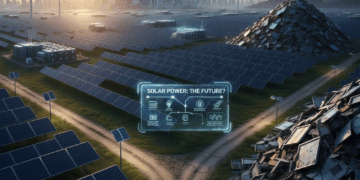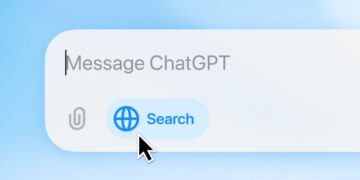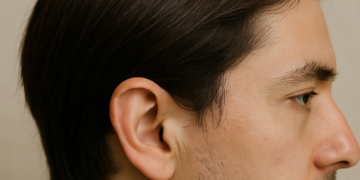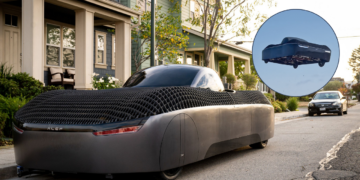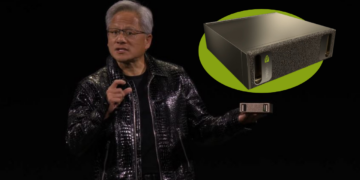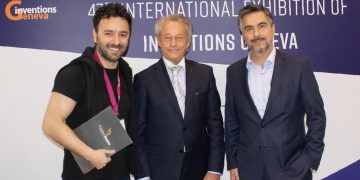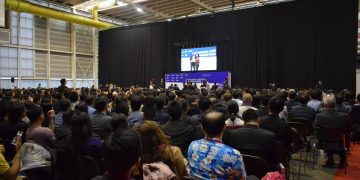The patent system in India is governed by the Patents Act, 1970 as amended by the Patents (Amendment) Act, 2005 and 2016. The criteria of patentability is TRIPS compliant- an invention is patentable subject matter if it meets the following criteria i) It should be novel ii) It should have inventive step or it must be non-obvious iii) It should be capable of Industrial application and iv) It should not attract the provisions of section 3 and 4 of the Patents Act 1970 (negative list). The negative list varies from country to country and Indian list is elaborate whuch states that an invention may satisfy the condition of novelty, inventiveness and usefulness but it may not qualify for a patent under the following situations: 1) an invention which is frivolous or which claims anything obviously contrary to well established natural laws; 2) an invention the primary or intended use or commercial exploitation of which could be contrary to public order or morality or which causes serious prejudice to human , animal or plant life or health or to the environment; 3) the mere discovery of scientific principle or the formulation of an abstract theory or discovery of any living thing or non-living substance occurring in nature; 4) the mere discovery of a new form of a known substance which does not result in enhancement of the known efficacy of that substance or the mere discovery of any new property or new use for a known substance or of the mere use of a known process, machine or apparatus unless such known process results in a new product or employs at least one new reactant; Explanation: For the purposes of this clause, salts, esters, ethers, polymorphs, metabolites, pure form, particle size, isomers, mixtures of isomers, complexes, combinations and other derivatives of known substance shall be considered to be the same substance, unless they differ significantly in properties with regards to efficacy; 5) a substance obtained by mere admixture resulting only in the aggregation of the properties of the components thereof or a process for producing such substance; 6) the mere arrangement or re-arrangement or duplication of known devices each functioning independently of one another in a known way; 7) a method of agriculture or horticulture; 8) any process for medicinal, surgical, curative, prophylactic (diagnostic, therapeutic) or other treatment of human beings or any process for a similar treatment of animals to render them free of disease or to increase their economic value or that of their products; 9) plants and animals in whole or any part thereof other than microorganisms but including seeds, varieties and species and essentially biological processes for production or propagation of plants and animals; 10) a mathematical or business method or a computer program per se or algorithms; 11) a literary, dramatic, musical or artistic work or any other aesthetic creation whatsoever including cinematographic works and television productions; 12) a mere scheme or rule or
method of performing mental act or method of playing game; 13) a presentation of information; 14) topography of integrated circuits; 15) an invention which, in effect, is traditional knowledge or which is an aggregation or duplication of known properties of traditionally known component or components and 16) inventions relating to atomic energy.
Process for getting a patent in India- normal
An Indian patent application goes through the following stages, till grant: stage 1 Filing: This stage includes filing the application at the Indian Patent Office and complying with all the formal requirements. The types of applications that can be filed are:
- A) PROVISIONAL APPLICATION: Indian Patent Law follows first to file system. A provisional application is an application which can be filed if the invention is still under experimentation stage. Filing a provisional specification provides the advantage to the inventor since it helps in establishing a priority date of the invention. Further, the inventor gets 12 months’ time to fully develop the invention and ascertain its market potential and to file the complete specification. B) ORDINARY APPLICATION : An application for patent filed in the Patent Office without claiming any priority either in a convention country or without any reference to any other earlier application under process in the office. Such type of application is known an ordinary application.
- C) CONVENTION APPLICATION: An application for patent filed in the Patent Office, claiming a priority date based on the same or substantially similar application filed in one or more of the convention countries is known as a convention application. In order to get convention status, an applicant should file the application in the Indian Patent Office within 12 months from the date of first filing of a similar application in the convention country.
- D) PCT INTERNATIONAL APPLICATION: An Application filed in India as Receiving Office (RO) under Patent Cooperation Treaty is an international application which can be filed in more than 150 countries by a single application. E) PCT NATIONAL PHASE APPLICATION: When an international application is made according to PCT designating India, an applicant can file the national phase application in India within 31 months from the international filing date or the priority date, whichever is earlier.
Stage 2 Filing a Request for Examination: A request for examination is required to be filed by the applicant so that the application is taken up for examination. The request may be filed at the time of filing of the application or subsequently within 48 months from the earliest priority date. If the request for examination is not filed within said time limit, the application is irrevocably terminated.
Stage 3 Publication: After the application has been filed, the application is published by the Indian Patent Office for public inspection in an official journal issued on every Friday. This is also available in electronic form on the website of the Patent Office, www.ipindia.gov.in. The Patent office Journal contains information relating to patent applications , post grant publication, restoration of patent, notifications, list of non- working patents and public notices issued by the Patent Office. Upon the publication of the application, the applicant has like privileges and rights as if the invention has been granted a patent on the date of
the publication. Damages can be claimed from the date of publication of application in India. However, the applicant can file an infringement suit only after the grant of the patent.
Stage 3 Examination: An application is taken up for examination, only after it has been published and a request for examination has been filed. Additionally, in case of a national phase application the application will be taken up for examination only after the expiry of 31 months’ period from the priority date. Once examination begins, the Controller issues a First Examination Report (FER), a response to which is required to be submitted within 6 months from the date of issuance of FER. An extension of 3 months is available to submit the response.The Indian Patent Office typically offers a hearing to the applicant after the response to the FER has been filed, to address any pending objections. Once all objections have been addressed, the application is placed in order for grant. In case a pre grant opposition is pending, the further action is taken after disposition of the pre grant opposition.
Stage 4 Pre-grant opposition: Any person can file a pre-grant opposition at the Indian Patent Office in order to challenge the grant of the application, any time after the publication of the application but before the grant of the patent.A representation for pre-grant opposition can be filed within six months from the date of publication of the application or before the grant of patent. There is no fee for filing representation for pre-grant opposition. This can be filed by any person. The grounds for filing pre-grant opposition are contained in section 25(1) of the Patents Act 1970.
Stage 5 Grant: If all objections have been addressed, the application proceeds to grant within a couple of months of the hearing mentioned above. After the patent has been granted, the patentee is required to pay a renewal fee every year to keep the patent in force. This renewal fee is applicable from the third year onwards. However, the renewal fee is payable only after the grant of the patent.
Stage 6 Post-Grant opposition: The time for filing post-grant opposition is 12 months from the date of publication of the grant of patent in the official journal of the patent office. The post grant opposition has to be filed by the person interested and not by any other person. The grounds of post-grant opposition are identical to those for pre-grant opposition. After receipt of the notice, the controller informs the patentee of the opposition and orders an opposition board to examine the opposition and give the controller its recommendation. The opposition board consists of three members, one of which is nominated by the controller to chair the board. In general, members of the board are patent examiners, except for the examiner who has dealt with the patent application. After receipt of the opposition board’s recommendation, the controller fixes a date and time for hearing both parties. After hearing both parties, or without a hearing
if neither party wishes to be heard, and considering the opposition board’s recommendation, the controller orders that the patent be either maintained, amended or revoked.
Cumulative time from date of filing
- Date of Filing….start
- Filing a request for examination- 48 months
- Publishing patent- 18months
- First examination report- 21months
- Response to first examination report- 30months
- Pre-grant opposition-36 months
- Hearing- 42moths
- Revising the patent (claims etc)- 60 months
- Examining revised patent- 65months
- Grant of patent- 68 months.
- Post-grant opposition-80 months
Pre-Grant Opposition Vs Post- Grant opposition
The main reason for longer time in India is due to provision of pre-grant opposition. Indian law permits any person to oppose a pending application, a procedure which is more elaborate than the third-party representation found in other jurisdictions. The pre-grant opposition involves detailed pleadings where both the opponent and applicant file a statement and reply, along with elaborate evidence. The parties may thereafter opt for a hearing on such an opposition and the entire exercise may take a few months before the controller gives a final decision. The filing of the pre-grant opposition appears to be more profound in cases where an applicant becomes assertive immediately after the publication of a patent application. In such a scenario, third parties generally realise that a suit for infringement against them is inevitable and they will try to focus on preventing the grant of a patent on such application, which includes filing a pre-grant opposition. Since any person can file an opposition, an individual who may not even have a direct nexus with the potential infringer is made to file the opposition to conceal the real motive. A pre-grant opposition can be filed only on the following grounds:
- wrongful obtainment of the invention (Section 25(1)(a) of the Patents Act); •anticipation by prior publication (anywhere in the world) (Section 25(1)(b));
- anticipation by prior claiming in India (Section 25(1)(c));
- public knowledge or public use in India before the priority date (Section 25(1)(d));
- obviousness and lack of inventive step in the invention (Section 25(1)(e));
- being an excluded subject matter (such as those inter alia provided in Section 3) (Section 25(1)(f));
- insufficiency of disclosure of the complete specification (Section 25(1)(g));
- non-compliance of the requirement of Section 8 or furnishing materially false information (Section 25(1)(h));
- non-filing of the application within 12 months of filing the first application in a convention country (Section 25(1)(i));
- non-disclosure or wrongful mention of the source or geographical origin of biological material (Section 25(1)(j)); and
- anticipation with regard to traditional knowledge of any community anywhere in the world (Section 25(1)(k)).
Pre-grant opposition after examination
In India, Pre-grant opposition often starts once the examination of a patent application has been completed by a positive result.The Office publishes its intention to grant the patent on the claimed invention contained in the application, and provides a certain time period during which an opposition can be filed.
Pre-grant opposition before examination
In some countries, the pre-grant opposition system is designed in such a way that it starts after the publication of the patent application and before substantive examination. Once the patent application is published, an opposition may be filed within a certain time period prescribed under the applicable law.The opponent shall state the grounds for opposition and submit any evidence.If no opposition is filed during that period, the substantive examination will be carried out.If an opposition is filed, the applicant will be notified, and given an opportunity to make observations and/or amend the application within the prescribed time period.
Pre-review by third parties before granting patent
A pre-review of the patentability of an invention by third parties before granting the patent is available in certain jurisdictions like the UK Intellectual Property Office and the European Patent Office (EPO). From September 2012, the America Invents Act also introduced provisions for third-party submissions on US patent applications.Up till now there was no mechanism for third parties to challenge PCT applications before they entered the national phase of each country. This new system provides an opportunity to persons skilled in the art to make observations
on pending PCT applications, during the international phase, if they believe that the claimed invention either lacks novelty or inventive step. It is a simple, centralized and an informal way of publicly questioning the validity of a patent but not binding on patent examiners.
Post-Grant Opposition
All countries provide for post-gnat oppostion. According to Article 99 of the European Patent Convention (EPC), an opposition for a European patent can be filed by any person within nine months of the publication of the mention of the grant of the EP patent in the European Patent Bulletin (EPB). USA has the provision of a re-examination procedure to challenge the validity of a granted patent. Any person (or a third-party) at any time during the period of enforceability of a patent, may cite to the United States Patents and Trademarks Office (USPTO), any prior art which that person believes to have a bearing on the patentability of any claim of a particular patent. The request is also required to set forth the pertinency and manner of applying cited prior art to every claim for which reexamination is requested.
Speeding up pre-grant opposition
Australia has pre-grant oppistion system like India. They noticed that the largest contribution to opposition delays was the time taken by opponents and patent applicants to prepare evidence supporting their respective positions. Although the rules nominally allocated three months to each of the three usual evidentiary periods, applications for extensions of time, and for opportunities to file additional evidence had become, in practice, almost impossible for the Patent Office to refuse. They introduced reporm in 2013 called Raise The Bar (RTB) to reduce the ability of each party to obtain extension of time to prepare evidence. The RTB reforms have cut the average total duration of an Australian patent opposition by nearly 50%, from just over four years (1512 days) to just over two years (773 days).
Fast track mechanism, India
Indian Government introduced program to request expedited examination while filing patent in 2016 on any of the following grounds, namely:
- a) that India has been indicated as the competent International Searching Authority or elected as an International Preliminary Examining Authority in the corresponding international application.
- b) that the applicant is a startup
- c) that the applicant is a small entity
- d) that the applicant is a natural person or in the case of joint applicants, all the applicants are natural persons, then applicant or at least one of the applicants is female
- e) that the applicant is a department of the Government
- f) that the applicant is an institute established by a Central, Provincial or State Act, which is owned or controlled by the Government
- g) that the applicant is a Government company as defined in clause (45) of section 2 of the Companies Act, 2013 (18 of 2013) h) that the applicant is an institution wholly or substantially financed by the Government
- i) that the application pertains to a sector which has been notified by the Central Government, on the basis of a request from the head of department of the Central Government
- j) that the applicant is eligible under an arrangement for processing a patent application pursuant to an agreement between Indian Patent Office and a foreign Patent Office.
The applicant can make a request for early publication in Form 9 along with the prescribed fee. After receiving such request the Patent Office publishes such application within a period of one month provided the invention contained thereon does not relate to Atomic energy or Defence purpose.Under the expedited examination, the examiner is obligatory to give the First Examination Report (FER) within 1 month but not exceeding 2 months from the date of reference of the application to the Examiner for examination by the Controller, and further, the final disposal of the application is to be taken within 3 months of filing of response to the First Examination Report.
Cumulat ive Timelines for fast-tracked examination
- Publication of the patent application by the Controller – 1 month • Examination report – 3 months
- Applicant responds to the first examination report – 5 months
- Dispose the application – 8 months
Many start ups were able to get the patents granted within a record time of almost 8 months. One startup got a patent process of Apixaban, an anti coagulant, in record time of almost 4 months under the expedited examination process. The applicant had filed a request for expedited examination on March 21, 2017, and the IPO issued the first examination report within less than two weeks on March 31, 2017 to which a reply was filed on May 4, 2017, after which the
hearing was held on June 23, 2017, the patent was granted on July 12, 2017.
Conclusion
In India, specific restrictions on the patentability of polymorphs and other new forms of a known drug substances have been put through the Section 3(d). Indian patent law requires that for being patentable, a new form shall be more “efficacious” than the existing known substance. In the Novartis-Glivec case, the supreme court of India has provided the meaning of the term “efficacy” in the Section 3(d) as “therapeutic efficacy”. India and USA follow a single stage of patent examination wheras Europe and China follow two stages, preliminary examination and substantive examination. In U.S. it is possible to opt-out of the publication of the patent application, through which applicants can avoid publication of their applications in certain cases. This option allows the applicants to keep their patent application confidential and out of the sight of their competitors till the patent is granted. This provision is not available in Europe, China and India.EPO issues a search report & opinion on patentability on the claimed invention. The search report helps the applicant to make decision on whether to get the application further examined and in which member countries to pursue the application. Based on the results of the search report the applicant may also amend the application before it is substantially examined. The provisions related to search report & opinion are not available in the U.S., China and India. U.S., Europe and China fallows Ex-parte preissuance submissions at the pre-grant stage, whereas, India has adopted an Inter-partes pre-grant opposition procedure. No fee, estoppel provision and threshold to institute the proceeding are applicable at pre-grant stage in all the four countries. At post-grant stage all the four countries follow Inter partes post-grant opposition.
Author: A.S.Rao, Academic Director, IFIA



